Are you considering shipping from Shenzhen to Canada but feeling overwhelmed by the logistics involved?
The journey of your goods from one country to another can be complex, filled with various challenges and regulations. In this comprehensive guide, we will explore the essential aspects of shipping, including key factors influencing costs, different shipping methods, and how to navigate customs regulations. Get ready to streamline your shipping process and ensure a successful import experience!

Understanding the Logistics of Shipping from Shenzhen to Canada
Overview of the Shipping Process from Shenzhen to Canada
Shipping from Shenzhen, one of China’s major manufacturing hubs, to Canada involves a systematic process that encompasses various stages, from the moment goods leave the factory to their arrival at the final destination. Understanding this logistics framework is crucial for importers looking to navigate the complexities of international trade.
Origin Preparation: The process begins with preparing the goods for shipment. This includes selecting appropriate packaging, labeling, and assembling the necessary documentation (more on this in later sections).
Choosing a Shipping Method: Importers can choose between sea freight and air freight, each with its own cost and time implications. The choice depends on factors such as urgency, weight, and nature of the goods.
Freight Forwarding: Engaging a reliable freight forwarder, like Dantful International Logistics, is advisable. They coordinate the logistics, handle paperwork, and can offer valuable advice on customs regulations.
Customs Clearance: Upon arrival in Canada, goods must clear customs. This involves submitting the necessary documentation and paying any applicable tariffs or duties.
Last-Mile Delivery: After customs clearance, the goods are transported to their final destination, which may involve additional logistics, such as door-to-door shipping.
Key Factors Influencing Shipping Costs for Imports to Canada
Shipping costs from Shenzhen to Canada can vary significantly based on several key factors. Understanding these can help importers better budget for their shipments and avoid unexpected expenses. Here are the primary factors that influence shipping costs:
| Factor | Description |
|---|---|
| Shipping Method | Sea freight is generally more cost-effective for bulk shipments, while air freight is faster but more expensive. For more details, see Shipping From China to Canada. |
| Weight and Volume | Heavier and larger shipments incur higher shipping fees. The shipping cost is often calculated based on the greater of the actual weight or volumetric weight. |
| Destination Port | Different ports may have varying charges and fees associated with handling and customs clearance. For example, shipping to Toronto may differ from shipping to Vancouver. Refer to shipping rates from China to Canada. |
| Insurance | While optional, insuring high-value goods adds to shipping costs but provides peace of mind. |
| Tariffs and Duties | Importers must consider any tariffs or duties imposed by the Canadian government that may apply to their goods, which can significantly affect the overall cost. |
| Seasonal Demand | Costs can fluctuate based on peak shipping seasons, such as the holiday season, when demand for freight services increases. |
Shipping Methods from Shenzhen to Canada
Sea Freight from Shenzhen to Canada
Sea freight is one of the most popular shipping methods for transporting goods from Shenzhen to Canada, particularly for bulk shipments. This method is favored for its cost-effectiveness and ability to accommodate large volumes of goods.
Cost-Effectiveness: Sea freight is generally more affordable than air freight, especially for heavy and bulky items. This makes it an ideal choice for businesses looking to keep their shipping costs low.
Transit Time: The typical transit time for sea freight from Shenzhen to major Canadian ports like Vancouver or Toronto ranges between 20 to 40 days, depending on the shipping line, route, and any potential delays.
Container Options: Importers can choose from different container types, including 20ft and 40ft standard containers, high cube containers, and reefer containers for temperature-sensitive goods.
Freight Consolidation: Utilizing a freight forwarder like Dantful International Logistics allows importers to take advantage of consolidated freight services, significantly reducing costs by combining shipments from multiple clients into one.
Air Freight from Shenzhen to Canada
Air freight is the preferred option for businesses requiring fast delivery of goods from Shenzhen to Canada. Although it is more expensive than sea freight, it offers several advantages:
Speed: Air freight can deliver goods from Shenzhen to Canadian airports in as little as 3 to 7 days, making it ideal for time-sensitive shipments.
Reliability: With established schedules and reduced transit times, air freight is often seen as more dependable than sea transport, which can be affected by weather conditions and port congestion.
Smaller Shipments: Air freight is ideal for smaller, high-value shipments, especially electronics or fashion items, where time is critical, and inventory turnover is essential.
Enhanced Tracking: Air freight services generally offer advanced tracking systems that allow importers to monitor their shipments in real-time, providing peace of mind.
In conclusion, choosing the right shipping method—be it sea freight or air freight—depends on the specific needs of the business. Engaging a professional freight forwarder like Dantful International Logistics can simplify this process by offering tailored solutions that meet your shipping requirements efficiently and cost-effectively.
READ MORE:
- Shipping From China to the USA
- Shipping From China TO Canada
- Shipping From China TO Mexico
- Shipping From China to Panama
- Shipping From China to Costa Rica
- Shipping From China to Brazil
- Shipping From China TO Colombia
- Shipping From China to Jamaica
- Shipping From China to Venezuela
- Shipping From China to Argentina
Preparing Your Goods for International Shipping from Shenzhen to Canada
Essential Packaging Guidelines for Safe Transit to Canada
When preparing your goods for international shipping from Shenzhen to Canada, proper packaging is essential to ensure that your products arrive in excellent condition. Here are some critical packaging guidelines to follow:
Select the Right Materials: Use high-quality packaging materials that are appropriate for the type of goods you are shipping. For fragile items, employ bubble wrap, foam, or other cushioning materials to protect against impact during transit. For heavier items, consider using sturdy cardboard boxes or wooden crates.
Ensure Proper Sealing: All packages should be securely sealed with strong packaging tape to prevent any accidental openings during transit. Avoid using flimsy tape, as it may not hold up against the rigors of shipping.
Label Packages Clearly: Each package should be clearly labeled with the destination address, sender information, and any necessary handling instructions (e.g., “Fragile”, “Handle with Care”). This not only aids in delivery but also ensures that your packages are treated appropriately during transportation.
Weight and Size Considerations: When packaging your goods, consider the weight and dimensions carefully. Overly heavy or oversized packages may incur additional shipping costs. Make sure to comply with the regulations set forth by the chosen shipping method, whether it’s ocean freight or air freight.
Use Palletization for Bulk Goods: If shipping bulk items, consider palletizing your goods to facilitate easier handling and loading at ports. Ensure that the pallets are in good condition and that the items are secured and wrapped to prevent movement during transit.
By following these guidelines, you can significantly reduce the risk of damage and ensure a smooth transition for your goods as they travel from Shenzhen to Canada.
Comprehensive Documentation Required for Shipping from Shenzhen to Canada
Documentation is a critical aspect of the international shipping process. Failing to submit the necessary paperwork can lead to delays, additional costs, and even penalties. Here are the key documents you need when shipping from Shenzhen to Canada:
Commercial Invoice: This document outlines the details of the transaction between the seller and buyer, including item descriptions, quantities, unit prices, and total value. It is used for customs valuation.
Packing List: This is a detailed list that includes specifications of the shipped items, such as dimensions, weight, and count. It helps customs officers inspect shipments and ensures that all items are accounted for.
Bill of Lading (BOL): The BOL is a legal document between the shipper and the carrier, detailing the type and quantity of goods being transported. It serves as a receipt for the cargo and proof of ownership.
Customs Declaration: This document declares the goods being imported into Canada and provides information required for customs clearance. It is essential for determining duties and taxes owed.
Certificate of Origin: Depending on the nature of your goods, you may need to provide a certificate of origin to certify where the goods were produced. This can help in determining tariff rates.
Insurance Certificate: This document provides proof of insurance for the goods being shipped. It ensures that you are covered in case of loss or damage during transit.
Import Permits: Certain goods may require specific import permits or licenses to enter Canada. Ensure that you check the regulations for your particular product category to avoid complications.
Having these documents prepared and organized will streamline the shipping process, allowing for quicker customs clearance and fewer delays when your goods arrive in Canada.
Navigating the Customs Clearance Process for Shipping to Canada
Key Customs Regulations for Goods Entering Canada
When shipping goods from Shenzhen to Canada, understanding the customs regulations is crucial to ensure compliance and avoid delays. Here are some key regulations to keep in mind:
Duties and Taxes: Goods imported into Canada are subject to customs duties and taxes, including the Goods and Services Tax (GST) or the Harmonized Sales Tax (HST). The applicable rates depend on the type of goods and their value. Importers should check the Canada Border Services Agency (CBSA) website for the latest rates and regulations.
Prohibited and Restricted Items: Canada has specific regulations regarding prohibited and restricted items. Certain goods, such as firearms, narcotics, and specific agricultural products, are not allowed to be imported. Familiarize yourself with these regulations to avoid penalties.
Import Controls: Some goods require special permits or licenses to be imported into Canada, including pharmaceuticals, food products, and cultural property. Ensure you obtain the necessary approvals before shipping.
Marking and Labeling Requirements: Imported goods must meet specific marking and labeling standards. This includes providing the country of origin and appropriate safety warnings.
Customs Valuation: The value of the goods declared to customs must accurately reflect the transaction value. Underdeclaring the value to avoid duties can result in severe penalties.
Strategies to Simplify Customs Clearance for Your Shipments
Navigating the customs clearance process can be complex; however, there are several strategies to simplify it:
Engage a Reliable Freight Forwarder: Partnering with a professional freight forwarder like Dantful International Logistics can significantly ease the customs process. Our experts are well-versed in customs regulations and can assist you in preparing the necessary documentation, ensuring compliance and expediting clearance.
Pre-Declare Goods: If feasible, pre-declare your goods to customs before they arrive in Canada. Providing customs authorities with advanced notice can facilitate faster clearance.
Use a Customs Broker: Employing a licensed customs broker can streamline the clearance process. They are knowledgeable about current regulations and can handle documentation on your behalf, ensuring that all customs obligations are met.
Stay Informed: Regularly update yourself on changes in customs regulations and procedures. This knowledge can help you avoid costly mistakes and improve your shipping efficiency.
Maintain Clear Communication: Keep in touch with your freight forwarder and customs broker to ensure that any potential issues are promptly addressed. Clear communication can help resolve complications before they escalate.
By understanding the customs regulations and employing effective strategies, you can facilitate a smoother customs clearance process for your shipments from Shenzhen to Canada. Partnering with Dantful International Logistics ensures that your shipping needs are met with the highest level of professionalism and efficiency.
Partnering with a Reliable Freight Forwarder for Shipping Logistics
How a Freight Forwarder Can Help Lower Tariffs and Duties on Imports
When importing goods from Shenzhen to Canada, navigating the intricate landscape of tariffs and duties can be daunting. This is where a seasoned freight forwarder, such as Dantful International Logistics, plays a pivotal role.
A professional freight forwarder has extensive knowledge of the regulations governing international trade and can provide invaluable guidance on how to minimize costs. They leverage their expertise to classify goods accurately under the Harmonized System (HS) codes, ensuring that you take advantage of any applicable duty exemptions or reductions. Furthermore, they can assist you in obtaining necessary import permits and licenses, allowing you to avoid unnecessary delays and expenses.
By partnering with an experienced freight forwarder, you also gain access to their established relationships with customs authorities. These connections can lead to expedited customs clearance processes, ultimately reducing the time and cost associated with importing goods. Moreover, a reliable freight forwarder will keep you informed about any changes in tariff regulations, ensuring that your shipping practices remain compliant with current laws.
Essential Questions to Ask Your Freight Forwarder Before Shipping
Choosing the right freight forwarder is crucial to the success of your shipping operations. Here are some essential questions to ask your freight forwarder before moving forward with shipping from Shenzhen to Canada:
What experience do you have with shipping to Canada?
Understanding their familiarity with Canadian customs regulations and import procedures can give you peace of mind.What services do you offer?
Ensure they can handle all aspects of the shipping process, including ocean freight, air freight, customs clearance, and insurance.How do you handle delays?
Inquire about their strategies for managing unforeseen circumstances and how they keep clients informed throughout the process.What are your payment terms?
Understanding their pricing structure, including any hidden fees or additional costs, is essential for budgeting your shipping expenses.Can you provide references?
Speaking with previous clients can offer insights into the reliability and quality of their services.
Tracking Your Shipment from Shenzhen to Canada
Effective Techniques for Monitoring Shipment Status
Once your goods are on their way from Shenzhen to Canada, staying updated on their status is vital. Many freight forwarders, including Dantful International Logistics, offer advanced tracking solutions that provide real-time updates. Here are some effective techniques for monitoring your shipment:
Use Tracking Numbers: Every shipment is assigned a unique tracking number. Utilize this number on your freight forwarder’s website or logistics platform to get real-time updates on your shipment’s location.
Sign Up for Notifications: Many logistics companies offer email or SMS notifications that alert you to key milestones in the shipping process, such as departure, arrival, and customs clearance.
Leverage Technology: Consider using logistics tracking software that integrates with your freight forwarder’s system to provide you with detailed insights and analytics.
Steps to Take When Your Shipment from Shenzhen is Delayed
Delays can occur for various reasons, including customs holdups, weather conditions, or logistical challenges. If your shipment from Shenzhen is delayed, consider the following steps:
Contact Your Freight Forwarder: Reach out to your freight forwarder to understand the cause of the delay and the expected resolution timeline.
Stay Informed: Regularly check the tracking updates to monitor the status of your shipment. This will help you stay informed and manage any expectations with your stakeholders.
Prepare for Customs: If the delay is related to customs clearance, ensure that all necessary documentation is in order. Your freight forwarder can assist you in resolving any outstanding issues.
Communicate with Stakeholders: Keep any affected parties informed about the delay and provide updates as necessary. Transparency can help mitigate any negative impacts on your business operations.
Additional Tips for Smooth Shipping from Shenzhen to Canada
Understanding Import Restrictions and Prohibited Items for Canada
Before shipping goods to Canada, it is crucial to be aware of the country’s import restrictions and prohibited items. Certain products may be banned or require special permits, including:
- Certain agricultural products: Such as fruits and vegetables, which may face stringent regulations to prevent pests and diseases.
- Controlled goods: Items like firearms, explosives, or specific pharmaceuticals often require special licensing.
- Cultural property: Items of significant cultural, historical, or archaeological importance may be restricted.
Reviewing the Canada Border Services Agency (CBSA) guidelines can help you understand what items are permissible. Consulting with your freight forwarder can also provide clarity on any restrictions relevant to your specific shipment.
The Importance of Shipping Insurance for High-Value Goods
Shipping high-value goods from Shenzhen to Canada inherently carries risks. It is advisable to invest in shipping insurance to protect your investment. Here are key reasons why:
Protection Against Loss or Damage: Insurance covers the cost of goods that may be lost, stolen, or damaged during transit, providing peace of mind.
Mitigating Financial Risks: Without insurance, you may face substantial financial loss if your goods do not arrive as expected.
Customizable Coverage: Shipping insurance can often be tailored to fit the specific needs of your shipment, allowing you to choose coverage that suits your risk tolerance.
By partnering with Dantful International Logistics, you can ensure that your shipments are not only handled professionally but also protected against potential risks, making your international shipping experience smoother and more secure.

Young Chiu is a seasoned logistics expert with over 15 years of experience in international freight forwarding and supply chain management. As CEO of Dantful International Logistics, Young is dedicated to providing valuable insights and practical advice to businesses navigating the complexities of global shipping.


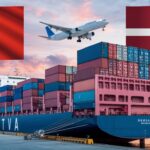



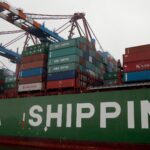






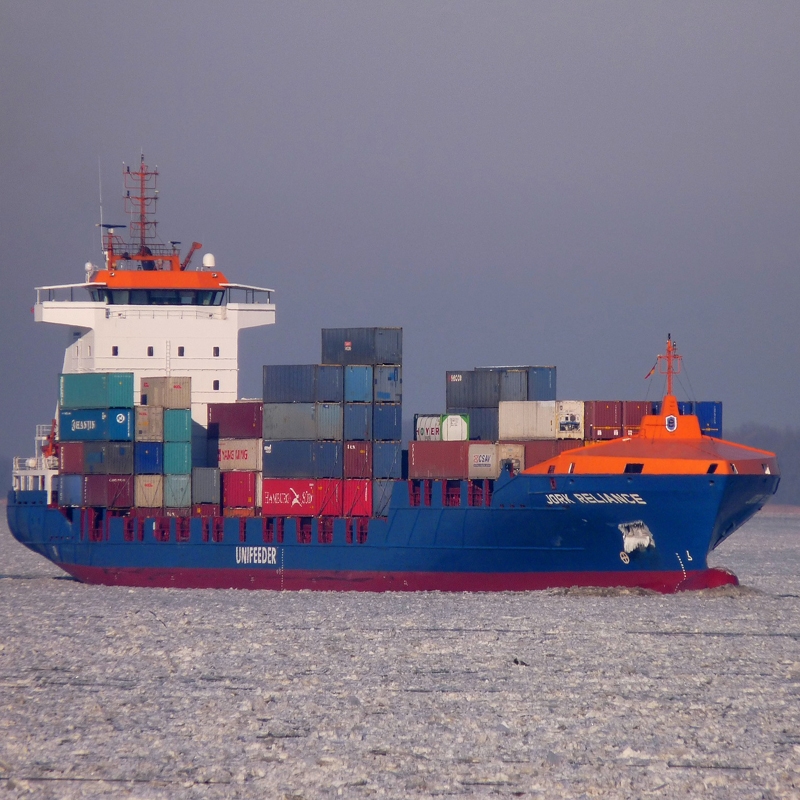


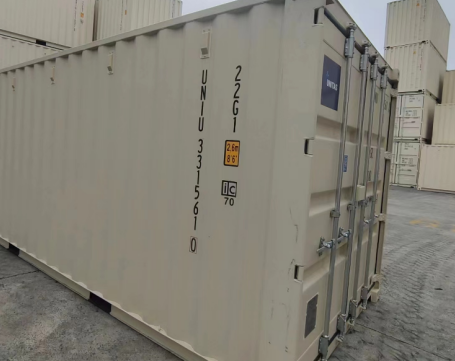

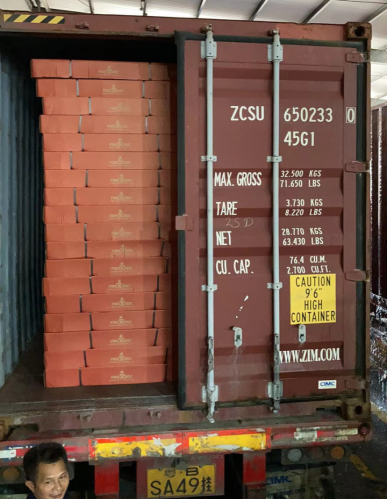
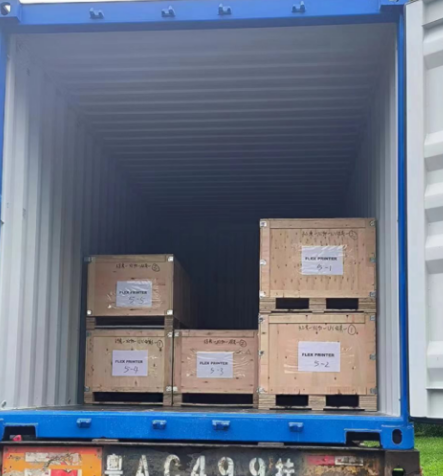
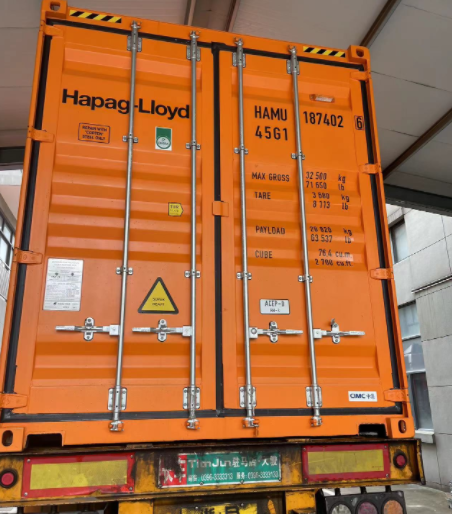
 Afrikaans
Afrikaans Shqip
Shqip አማርኛ
አማርኛ العربية
العربية Հայերեն
Հայերեն Azərbaycan dili
Azərbaycan dili Euskara
Euskara Беларуская мова
Беларуская мова বাংলা
বাংলা Bosanski
Bosanski Български
Български Català
Català Cebuano
Cebuano Chichewa
Chichewa 简体中文
简体中文 繁體中文
繁體中文 Corsu
Corsu Hrvatski
Hrvatski Čeština
Čeština Dansk
Dansk Nederlands
Nederlands English
English Esperanto
Esperanto Eesti
Eesti Filipino
Filipino Suomi
Suomi Français
Français Galego
Galego ქართული
ქართული Deutsch
Deutsch Ελληνικά
Ελληνικά Kreyol ayisyen
Kreyol ayisyen Harshen Hausa
Harshen Hausa Ōlelo Hawaiʻi
Ōlelo Hawaiʻi עִבְרִית
עִבְרִית हिन्दी
हिन्दी Hmong
Hmong Magyar
Magyar Íslenska
Íslenska Igbo
Igbo Bahasa Indonesia
Bahasa Indonesia Gaeilge
Gaeilge Italiano
Italiano 日本語
日本語 Basa Jawa
Basa Jawa ಕನ್ನಡ
ಕನ್ನಡ Қазақ тілі
Қазақ тілі ភាសាខ្មែរ
ភាសាខ្មែរ 한국어
한국어 كوردی
كوردی Кыргызча
Кыргызча ພາສາລາວ
ພາສາລາວ Latin
Latin Latviešu valoda
Latviešu valoda Lietuvių kalba
Lietuvių kalba Lëtzebuergesch
Lëtzebuergesch Македонски јазик
Македонски јазик Malagasy
Malagasy Bahasa Melayu
Bahasa Melayu മലയാളം
മലയാളം Maltese
Maltese Te Reo Māori
Te Reo Māori मराठी
मराठी Монгол
Монгол ဗမာစာ
ဗမာစာ नेपाली
नेपाली Norsk bokmål
Norsk bokmål پښتو
پښتو فارسی
فارسی Polski
Polski Português
Português ਪੰਜਾਬੀ
ਪੰਜਾਬੀ Română
Română Русский
Русский Samoan
Samoan Gàidhlig
Gàidhlig Српски језик
Српски језик Sesotho
Sesotho Shona
Shona سنڌي
سنڌي සිංහල
සිංහල Slovenčina
Slovenčina Slovenščina
Slovenščina Afsoomaali
Afsoomaali Español
Español Basa Sunda
Basa Sunda Kiswahili
Kiswahili Svenska
Svenska Тоҷикӣ
Тоҷикӣ தமிழ்
தமிழ் తెలుగు
తెలుగు ไทย
ไทย Türkçe
Türkçe Українська
Українська اردو
اردو O‘zbekcha
O‘zbekcha Tiếng Việt
Tiếng Việt Cymraeg
Cymraeg יידיש
יידיש Yorùbá
Yorùbá Zulu
Zulu